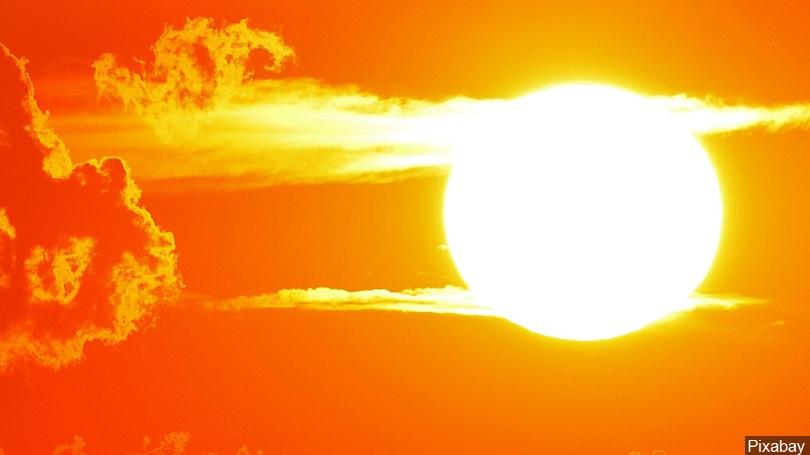
Public Service Announcement

North American summers are hot; most summers see heat waves in one section or another of the United States. East of the Rockies, they tend to combine with high temperature and high humidity although some of the worst have been catastrophically dry.
Elderly persons, small children, chronic invalids, those on certain medications or drugs (especially tranquilizers and anticholinergics), and persons with weight and alcohol problems are particularly susceptible to heat reactions, especially during heat waves in areas where a moderate climate usually prevails.
HEAT DISORDER SYMPTOMS:
Sunburn – Symptoms: Redness and pain. In severe cases swelling of skin, blisters, fever, and headaches. First Aid: Ointments for mild cases if blisters appear and do not break. If breaking occurs, apply dry sterile dressing. Serious, extensive cases should be seen by physician.
Heat Cramps – Symptoms: Painful spasms usually in muscles of legs and abdomen possible. Heavy sweating. First Aid: Firm pressure on cramping muscles, or gentle massage to relieve spasm. Give sips of water. If nausea occurs, discontinue use.
Heat Exhaustion – Symptoms: Heavy sweating, weakness, skin cold, pale and clammy. Pluse thready. Normal temperature possible. Fainting and vomiting. First Aid: Get victim out of sun. Have the victim lay down and loosen their clothing. Apply cool, wet cloths. Fan or move victim to air-conditioned room. Give sips of water. If nausea occurs, discontinue use. If vomiting continues, seek immediate medical attention.
Heat Stroke (or sunstroke) – Symptoms: High body temperature (106 deg. F or higher). Hot dry skin. Rapid and strong pulse. Possible unconsciousness. First Aid: HEAT STROKE IS A SEVERE MEDICAL EMERGENCY. SUMMON EMERGENCY MEDICAL ASSISTANCE OR GET THE VICTIM TO A HOSPITAL IMMEDIATELY. DELAY CAN BE FATAL! Move victim to a cooler environment. Reduce body temperature with cold bath or sponging. Use extreme caution. Remove clothing, use fans and air conditioners. If temperature rises again, repeat process. Do not give fluids.
HEAT WAVE SAFETY TIPS:
Slow down. Strenuous activities should be reduced, eliminated, or rescheduled to the coolest time of the day. Individuals at risk should stay in the coolest available place, not necessarily indoors.
Dress for summer. Lightweight light-colored clothing reflects heat and sunlight, and helps your body maintain normal temperatures.
Put less fuel on your inner fires. Foods (like proteins) that increase metabolic heat production also increase water loss.
Drink plenty of water or other non-alcohol fluids. Your body needs water to keep cool. Drink plenty of fluids even if your don’t feel thirsty. Persons who (1) have epilepsy or heart, kidney, or liver disease, (2) are on fluid restrictive diets or (3) have a problem with fluid retention should consult a physician before increasing their consumption of fluids.
Do not drink alcoholic beverages.
Do not take salt tablets (unless specified by a physician). Persons on salt restrictive diets should consult a physician before increasing their salt intake.
Spend more time in air-conditioned places. Air conditioning in homes and other buildings markedly reduces danger from the heat. If you cannot afford an air conditioner, spending some time each day (during hot weather) in an air conditioned environment affords some protection.
Don’t get too much sun. Sunburn makes the job of heat dissipation that much more difficult.
Enjoy our Ohio Valley summer but, be careful and know your limits when it comes to “playing or working in the sun.”
This has been a reminder from your Henderson Office of Emergency Management.
“Building a Disaster Resistant Community”
Leave a Reply